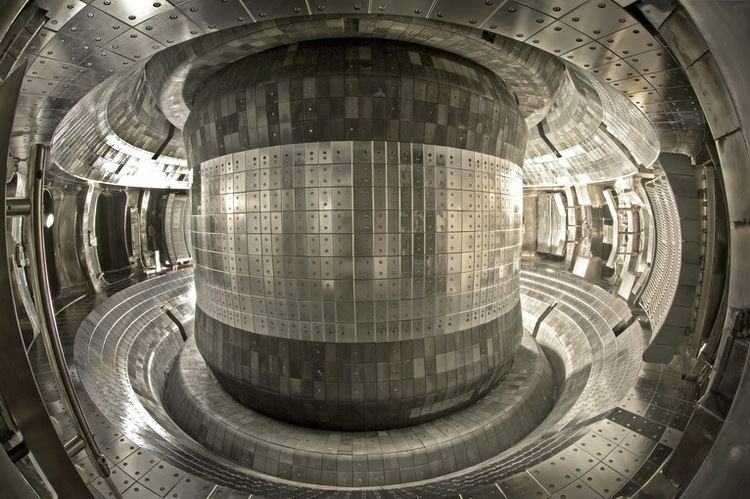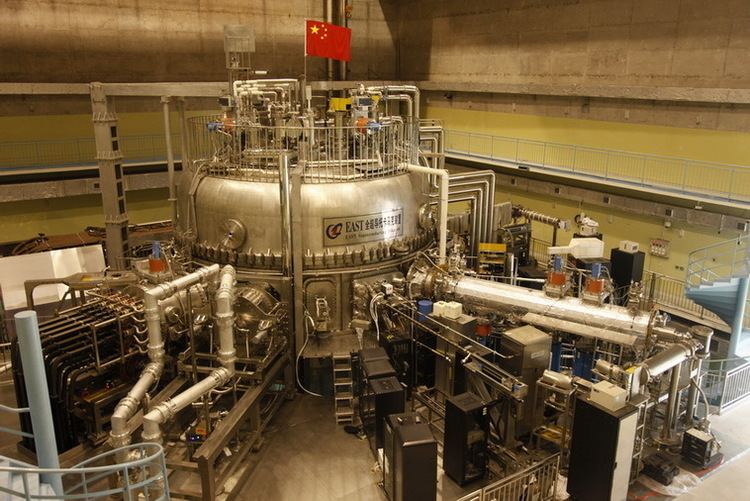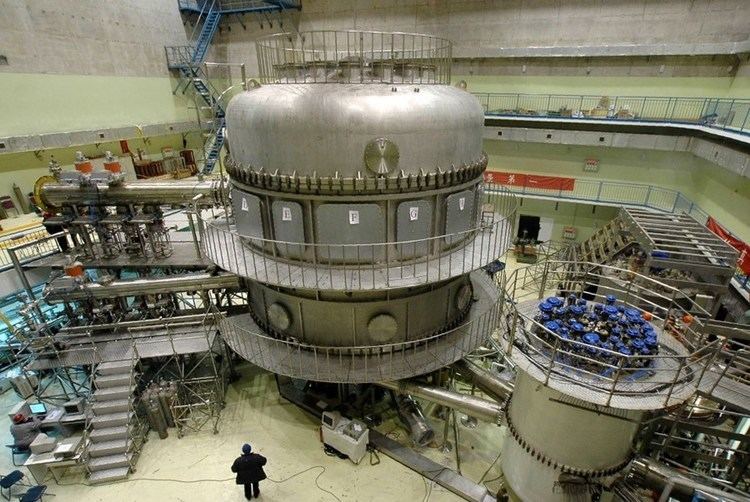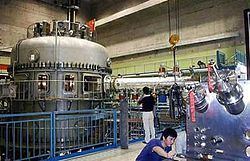Major radius 1.85 m Magnetic field 3.5 T | Operation date 2006– Minor Radius 0.45 m Heating 7.5 MW | |
 | ||
The Experimental Advanced Superconducting Tokamak (EAST), internal designation HT-7U) is an experimental superconducting tokamak magnetic fusion energy reactor in Hefei, China. The Hefei-based Institute of Plasma Physics is conducting the experiment for the Chinese Academy of Sciences. It has operated since 2006. It was later put under control of Hefei Institutes of Physical Science.
Contents

It is the first tokamak to employ superconducting toroidal and poloidal magnets. It aims for plasma pulses of up to 1000 seconds.
History

The project was proposed in 1996 and approved in 1998. According to a 2003 schedule, buildings and site facilities were to be constructed by 2003. Tokamak assembly was to take place from 2003 through 2005.
Construction was completed in March 2006 and on September 28, 2006, "first plasma" was achieved.

The reactor is an improvement over China's first superconducting tokamak device, dubbed HT-7, built by the Institute of Plasma Physics in partnership with Russia in the early 1990s.

According to official reports, the project's budget is CNY ¥300 million (approx. USD $37 million), some 1/15 to 1/20 the cost of a comparable reactor built in other countries.
Operations and results

On September 28, 2006, first plasma was achieved--the first test lasted nearly three seconds, and generated an electrical current of 200 kiloamperes.
By Jan 2007 "the reactor created a plasma lasting nearly five seconds and generating an electrical current of 500 kilo amperes".
By May 2015 it was reporting 1 MA currents, and H-mode for 6.4 seconds.
In February, 2016, a plasma pulse was maintained for a record 102 seconds at approximately 50 million Kelvin. Plasma current of 400kA and a density of about 2.4 x 1019/m3 with slowly increasing temperature.
On November 2, 2016, it was able to successfully sustain high-confinement (H-Mode) plasma for over a minute. The reactor was able to maintain a temperature of 50 million Kelvins, about three times as hot as Sun’s core.
Physics objectives
China is a member of the ITER consortium, and EAST is a testbed for ITER technologies.
EAST was designed to test:
